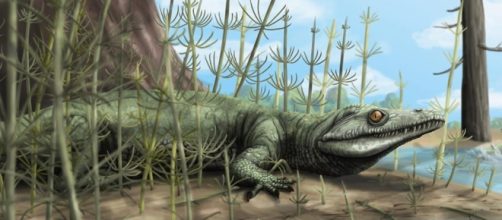The Fossils were found in Colorado and are thought to be 250 million years old. Through their study, it has been revealed that amphibians had more ancestors in their lineage than scientists originally thought. The fossils were found in the 1990's but a new analysis with upgraded technology led to this shocking discovery.
Who are these amphibians who existed years ago?
According to palaeontologist Adam Huttenlocker, these amphibians are similar to present day caecilians. Caecilians are worm-like carnivores, which live underground. They do not have any limbs and can grow up to five feet long.
The caecilians origin has always remained a mystery. However, upon further examination of these fossils, it appear that this mystery has been solved.
As amphibians developed throughout the generations it is thought, there was a genetic split with caecilians on one side and limbed amphibians such as salamanders and toads on the other. These findings reveal that the generational line of amphibians goes back as far as 315 million years ago. This is a major discovery and has filled a mysterious gap scientists have been perplexed by for years.
Another recent discovery confirms that frogs and salamanders descended from the same ancestor
According to the journal Nature, fossils have been found, which confirm this split lineage of frogs, salamanders and caecilians.
These fossils contain an ancestor, which is more like the combination of a frog and salamander. This proves that the caecilians generational line split from the other amphibians. It also suggests that frogs and salamanders may have branched from the caecilians at an earlier time than scientists already anticipated.
Palaeontologist Robert Carroll, confirms this stating that the newly discovered animal shows that frogs and salamanders are more closely related to each other than the caecilian. This new discovery was named Gerobatrachus hottoni and is said to look like a salamander with froglike ears and a stubby tail. Biologist Jason Anderson has explained that these fossils are critical in understanding the lineage of amphibians.
These discoveries share a previously unknown insight into the natural world and its adaptations over the years. Scientists are due to perform further research into the matter to try to track the period in which, this separation of the Amphibian species took place. These fossils prove hereditary links as far back as the Triassic era over 200 million years ago.


